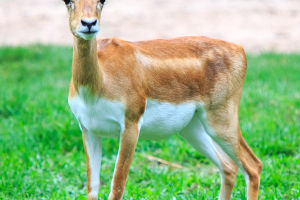Egrets are magnificent birds that have captured the hearts of birdwatchers and nature enthusiasts around the world.
They are members of the heron family, which includes some of the most graceful and beautiful birds in the world. Egrets are found in many parts of the world, including North and South America, Europe, Asia, and Africa. They are usually found near water, such as marshes, swamps, and wetlands, where they feed on fish, frogs, and other small aquatic animals.
One of the most distinctive features of egrets is their long, slender legs. These legs allow them to wade through shallow water, making it easier for them to hunt for food.
Egrets also have long, sharp beaks that they use to spear their prey or to pick it up from the water. These beaks are perfectly adapted for catching fish, which make up the majority of their diet.
Another feature that sets egrets apart is their plumage. During the breeding season, egrets grow long, feathery plumes on their backs. These plumes were once highly prized for use in hats and other fashion accessories.
In the late 19th century, egret populations were decimated by hunters who killed the birds for their plumes. Fortunately, conservation efforts have helped egret populations recover.
Egrets are social birds that often nest in colonies. They build their nests out of sticks and twigs in trees or shrubs near water.
Egret chicks are born helpless and must be cared for by their parents until they are able to fly and hunt on their own. Despite their elegance and grace, egrets are fierce defenders of their young and will not hesitate to attack any predator that threatens their nests.
There are several species of egrets, each with its own unique characteristics. The great egret, for example, is a large bird with white plumage and a yellow beak.
It can be found in many parts of the world and is known for its distinctive mating dance, which involves fluffing up its plumes and strutting around in a circle. The snowy egret, on the other hand, is a smaller bird with white plumage and a black beak. It is found mainly in the Americas and is known for its striking yellow feet.
Egrets play an important role in the ecosystem, helping to control populations of fish and other small aquatic animals. They are also indicators of the health of wetlands and other freshwater habitats. When egret populations are thriving, it is a sign that the ecosystem is healthy and in balance.
Despite their importance, egrets still face a number of threats. Habitat loss, pollution, and climate change are all taking a toll on these magnificent birds. Fortunately, there are many organizations and individuals working to protect and conserve egret populations.
By supporting these efforts, we can help ensure that egrets continue to thrive for generations to come.
Egrets are among the most beautiful and graceful birds in the world. Their long legs, sharp beaks, and striking plumage make them a favorite among birdwatchers and nature enthusiasts. As we work to protect these magnificent birds and their habitats, we are also helping to preserve the delicate balance of our planet's ecosystems.


